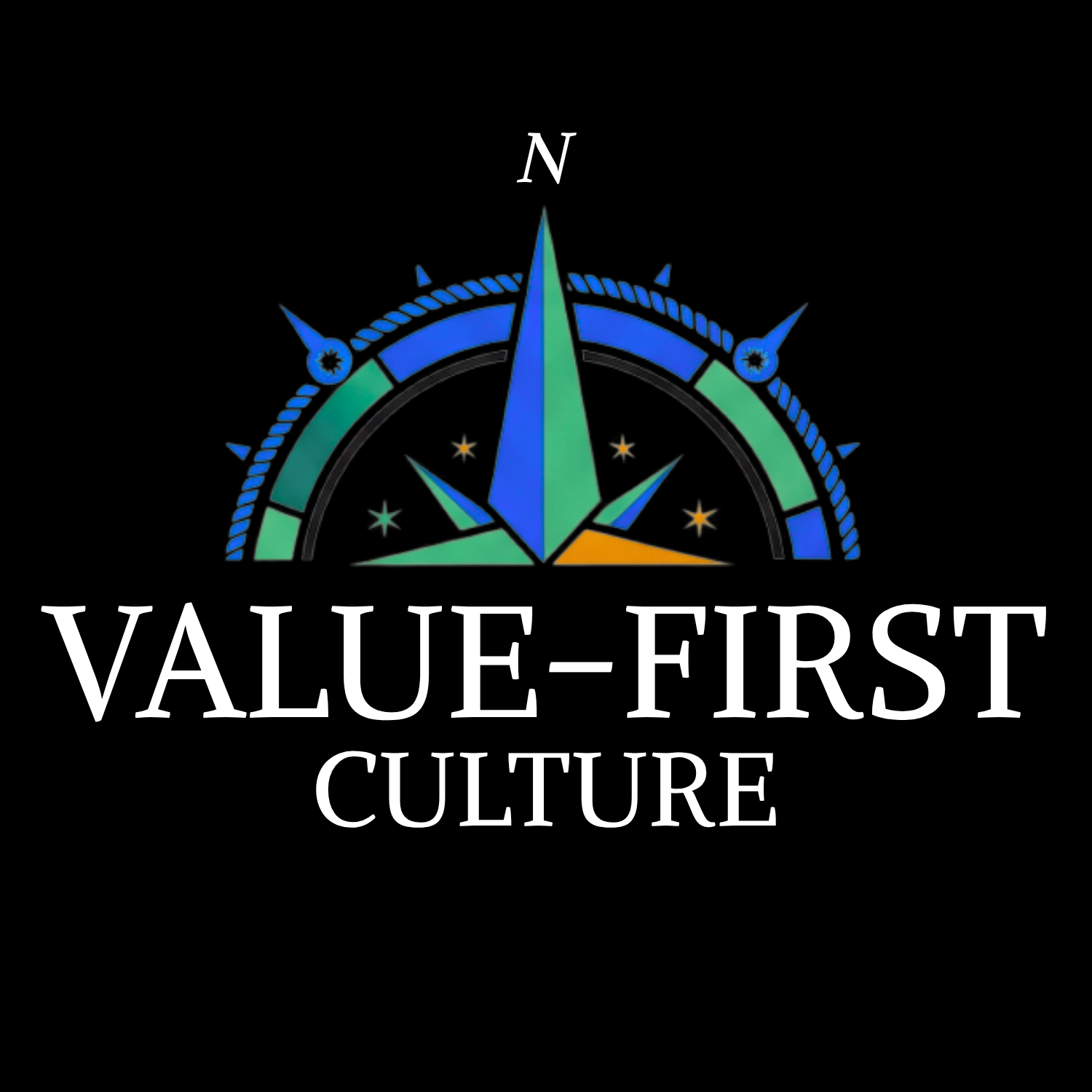Why 'Consultant' and 'Admin' Have Lost All Meaning in the AI Era (And What We Should Use Instead)
I saw a LinkedIn post recently that stopped me in my tracks.
9 min read
 Chris Carolan
Jul 13, 2025 9:01:01 AM
Chris Carolan
Jul 13, 2025 9:01:01 AM

From Behavioral Compliance to Collaborative Intelligence
You've built a sophisticated organizational culture. Your engagement scores are solid, your values are clearly defined, and your culture programs are comprehensive. But here's the uncomfortable truth: most organizational cultures are behavioral compliance systems disguised as human development environments.
Traditional culture design creates what we call the Conformity Trap—the more you optimize for behavioral consistency and cultural fit, the more you distance yourself from the cognitive diversity and authentic human potential that creates breakthrough innovation. Employees become cultural resources to be aligned instead of unique capabilities to be multiplied. Innovation gets standardized instead of empowered. And leaders become culture police instead of human potential enablers.
The result? Organizations that burn through human authenticity without creating lasting transformation. You're trapped in a cycle where higher engagement scores rarely translate to meaningful innovation, and sustainable competitive advantage feels impossible without constant culture management overhead.
Real organizational power doesn't come from managing behavioral compliance metrics. It emerges from collaborative intelligence—the breakthrough thinking that happens when authentic human diversity combines with genuine psychological safety and shared purpose.
Here's what changes when you shift from conformity optimization to potential multiplication:
Instead of behavioral standardization, you get cognitive diversity leverage Instead of culture fit requirements, you get authentic contribution development
Instead of engagement management, you get natural enthusiasm emergence Instead of compliance measurement, you get value creation tracking
The difference isn't just philosophical—it's measurable. Organizations built on collaborative intelligence consistently outperform conformity-focused organizations in innovation output, talent retention, adaptive capability, and sustainable competitive advantage development.
We believe humans naturally want to contribute meaningfully when connected to purpose and enabled to use their strengths. We commit to identifying and amplifying where energy already flows rather than forcing engagement through elaborate programs and incentives.
This means we will:
Implementation Example: Instead of quarterly engagement surveys that pressure everyone toward identical "highly engaged" responses, create organic dialogue opportunities where people can express authentic energy and contribute to evolving organizational purpose based on genuine enthusiasm rather than compliance expectations.
We believe innovation requires the freedom to try new approaches and learn from both success and failure. We commit to creating environments where learning through experimentation is valued more highly than perfect execution of established processes.
This means we will:
Implementation Example: Instead of performance reviews that penalize cognitive diversity and innovative approaches, create learning documentation systems where experimentation and pattern recognition are valued alongside traditional deliverables, encouraging breakthrough thinking rather than behavioral conformity.
We believe diversity of thought, background, and approach creates resilience and innovation when integrated into a community of shared purpose. We commit to creating environments where people can bring their whole selves rather than conforming to predetermined cultural templates.
This means we will:
Implementation Example: Instead of culture fit assessments that filter out cognitive diversity, create contribution potential evaluations that identify how different perspectives and approaches could strengthen collective capability while maintaining shared purpose alignment.
We believe that people make better decisions with more complete information, context, and understanding. We commit to defaulting to transparency except where specifically necessary, rather than controlling information to manage behavior.
This means we will:
Implementation Example: Instead of cascading communication systems that filter information through management layers, create direct access platforms where strategic context and decision rationale are available to everyone who contributes to outcomes, enabling informed participation rather than compliance with directives.
We believe that the most powerful opportunities often can't be predicted in advance. We commit to creating adaptive systems that can recognize and respond to emergent patterns rather than rigidly following predetermined paths.
This means we will:
Implementation Example: Instead of annual strategic planning that locks teams into predetermined approaches, create quarterly adaptation sessions where emerging patterns and unexpected opportunities can reshape priorities based on real-world learning rather than theoretical projections.
We believe each person has unique strengths, interests, and development trajectories. We commit to supporting individual and team growth in ways that align with natural learning patterns rather than forcing standardized development paths.
This means we will:
Implementation Example: Instead of standardized competency frameworks that force unique contributors into identical molds, create strength-based development conversations that identify natural talents and create opportunities for authentic contribution and growth while building collective organizational capability.
We believe genuine human connection creates the foundation for collaboration, trust, and resilience. We commit to creating environments where authentic relationships can develop naturally rather than treating interactions as purely transactional.
This means we will:
Implementation Example: Instead of efficiency-optimized workflows that minimize human interaction, create collaborative spaces and processes where authentic relationships can develop through shared challenges and mutual support, building trust and understanding that enhances rather than competes with productivity.
When culture transformation readiness indicators emerge rather than starting with predetermined initiatives:
Look for these trust-based milestones instead of arbitrary culture program timelines:
Begin the transformation when these patterns indicate readiness:
As natural collaboration and authentic contribution patterns establish themselves rather than forcing predetermined culture transformation timelines:
Develop dual culture systems when these indicators show sustainable foundation:
Expand collaborative culture infrastructure as trust and authenticity build:
Following sustained collaborative success and authentic contribution evidence rather than calendar-based culture advancement:
Transform primary culture systems when these outcomes demonstrate readiness:
Achieve sustainable culture transformation through proven patterns:
Value-First Culture success requires measurement that tracks collaborative intelligence development rather than behavioral compliance optimization. Here's how NEED Framework indicators replace traditional culture management metrics:
Old Way: Employee engagement scores and satisfaction ratings New Way: Natural Collaboration - Cross-functional partnership formation, organic problem-solving emergence, seamless knowledge flow patterns
Old Way: Culture fit assessments and behavioral compliance ratings
New Way: Enhanced Human Capability - Individual skill development acceleration, confidence building evidence, peer teaching emergence patterns
Old Way: Culture program participation rates and training completion metrics New Way: Elevated Value Creation - Breakthrough collaborative solutions, impossible individual outcomes, competitive advantage development through authentic diversity
Old Way: Management effectiveness scores and culture cascade completion New Way: Distributed Empowerment - Natural leadership emergence, self-organizing governance development, sustainable organizational culture systems
Natural Collaboration Evidence: Cross-functional teams collaborating seamlessly without management intervention or formal coordination requirements, complex challenges naturally attracting collaborative response patterns, expertise flowing organically to where it creates most value, AI coordinates administrative complexity while humans focus on authentic connection and creative problem-solving.
Enhanced Human Capability Evidence: Individual expertise and confidence growing through authentic work challenges rather than training programs, team members developing teaching capabilities through natural knowledge sharing rather than formal instructor roles, collaborative learning accelerating capability development beyond individual training program effectiveness.
Elevated Value Creation Evidence: Collaborative intelligence generating breakthrough solutions impossible through individual effort or standardized approaches, organizational innovation creating competitive advantages and market opportunities that uniformity-focused competitors cannot replicate, value multiplication creating exponential organizational growth rather than linear productivity improvement.
Distributed Empowerment Evidence: Leadership emerging naturally based on contribution and capability rather than appointment through formal processes, organizational governance evolving through authentic participation rather than imposed systems, knowledge networks creating self-sustaining learning systems rather than depending on centralized training infrastructure.
Solution: Start with small authenticity experiments that build confidence while demonstrating value rather than forcing immediate self-direction and cultural autonomy changes. Make authentic expression optional but clearly beneficial through visible success stories and contribution recognition.
Solution: Begin with simple barrier removal and gradually introduce more sophisticated collaboration support as you prove value and build capability rather than requiring comprehensive culture infrastructure upfront investment.
Solution: Implement dual measurement systems that show how collaborative intelligence enhances rather than threatens traditional culture outcomes instead of eliminating existing culture metrics immediately and creating management anxiety.
Solution: Create systems where natural collaboration and authentic diversity improve compliance outcomes rather than compromising them. Start with peer accountability that builds responsibility instead of depleting individual ownership and regulatory adherence.
Solution: Begin with one commitment at a time rather than comprehensive culture transformation. Transform your highest-performing team into a collaborative intelligence culture opportunity and build from proven success patterns.
The transformation from conformity-focused to intelligence-based culture doesn't happen overnight—but it starts with recognizing the Conformity Trap and choosing a different path toward authentic human potential multiplication.
When you're ready to begin: Identify one high-performing team you can transform into a collaborative intelligence culture pilot rather than waiting for perfect conditions or comprehensive culture program approval.
As team member authenticity readiness emerges: Launch one cross-functional project where team members teach each other essential skills related to organizational objectives instead of hiring external culture consultants or implementing formal training programs.
Following initial collaborative culture success: Remove one specific conformity barrier that prevents authentic contribution while redirecting culture management energy toward human potential multiplication rather than scaling behavioral oversight infrastructure.
Through sustained value multiplication and authentic contribution: Build a comprehensive collaborative intelligence culture system that creates sustainable competitive advantages for your organization and its people instead of optimizing behavioral compliance metrics indefinitely.
We're at an inflection point in organizational culture development. The industrial approach of managing behavioral compliance and controlling authentic expression is becoming increasingly ineffective as people seek genuine transformation and authentic collaborative opportunities.
Organizations that master collaborative intelligence culture will create sustainable competitive advantages that traditional conformity-based cultures cannot replicate. They'll attract and retain the highest-quality talent, generate breakthrough innovations that emerge from cognitive diversity, and create lasting value that compounds through authentic human collaboration.
The question isn't whether collaborative intelligence will become the standard for high-performing organizational cultures—it's whether your culture will be among the pioneers who establish the new paradigm or the followers who adapt to it after competitive advantages have already been captured.
The choice is yours. The opportunity is now.
This framework represents experience watching culture friction increase across industries as traditional behavioral compliance optimization fights against natural human collaboration and authentic contribution patterns. If you're ready to transform your culture from a conformity platform into a collaborative intelligence engine, the path forward requires courage to measure what matters rather than what's easy, and commitment to building human capability rather than dependency on culture management systems.
I saw a LinkedIn post recently that stopped me in my tracks.
Transforming Internal Operations from Hierarchical Control to Collaborative Intelligence